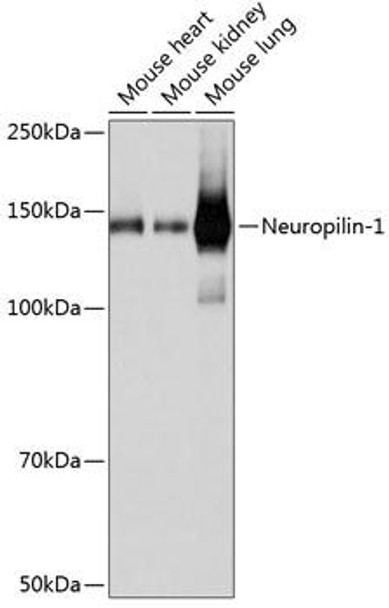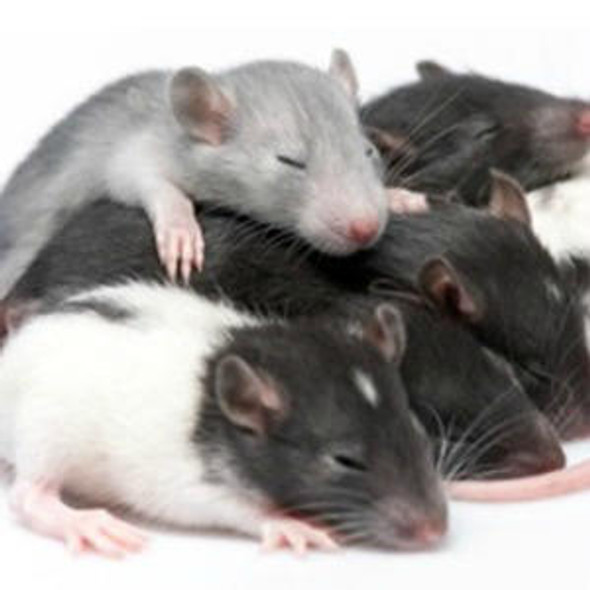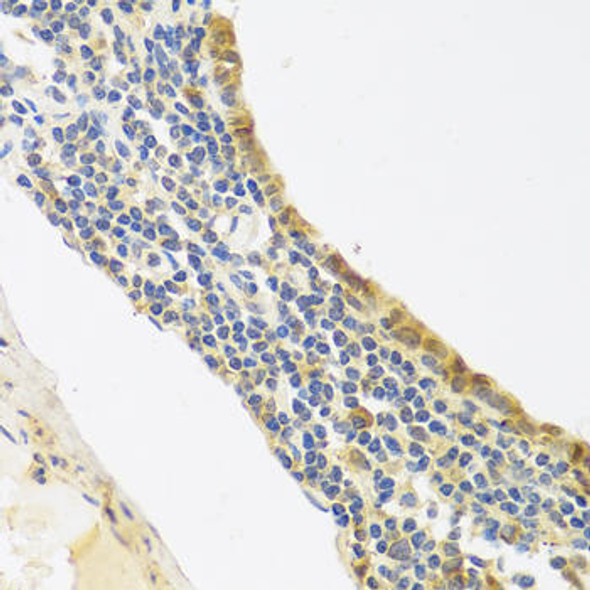Anti-Neuropilin-1 Antibody (CAB19087)
- SKU:
- CAB19087
- Product type:
- Antibody
- Reactivity:
- Human
- Mouse
- Rat
- Host Species:
- Rabbit
- Isotype:
- IgG
- Research Area:
- Cardiovascular
Description
| Antibody Name: | Anti-Neuropilin-1 Antibody |
| Antibody SKU: | CAB19087 |
| Antibody Size: | 20uL, 50uL, 100uL |
| Application: | WB |
| Reactivity: | Human, Mouse, Rat |
| Host Species: | Rabbit |
| Immunogen: | A synthesized peptide derived from human Neuropilin-1 |
| Application: | WB |
| Recommended Dilution: | WB 1:500 - 1:2000 |
| Reactivity: | Human, Mouse, Rat |
| Positive Samples: | Mouse heart, Mouse kidney, Mouse lung, HUVEC, Rat heart, Rat lung |
| Immunogen: | A synthesized peptide derived from human Neuropilin-1 |
| Purification Method: | Affinity purification |
| Storage Buffer: | Store at -20°C. Avoid freeze / thaw cycles. Buffer: PBS with 0.02% sodium azide, 0.05% BSA, 50% glycerol, pH7.3. |
| Isotype: | IgG |
| Sequence: | Email for sequence |
| Gene ID: | 8829 |
| Uniprot: | O14786 |
| Cellular Location: | |
| Calculated MW: | 120kDa |
| Observed MW: | 120kDa |
| Synonyms: | BDCA4, CD304, NP1, NRP, VEGF165R, Neuropilin-1, NRP1 |
| Background: | This gene encodes one of two neuropilins, which contain specific protein domains which allow them to participate in several different types of signaling pathways that control cell migration. Neuropilins contain a large N-terminal extracellular domain, made up of complement-binding, coagulation factor V/VIII, and meprin domains. These proteins also contains a short membrane-spanning domain and a small cytoplasmic domain. Neuropilins bind many ligands and various types of co-receptors; they affect cell survival, migration, and attraction. Some of the ligands and co-receptors bound by neuropilins are vascular endothelial growth factor (VEGF) and semaphorin family members. Several alternatively spliced transcript variants that encode different protein isoforms have been described for this gene. [provided by RefSeq, Oct 2011] |
| UniProt Protein Function: | NRP1: The membrane-bound isoform 1 is a receptor involved in the development of the cardiovascular system, in angiogenesis, in the formation of certain neuronal circuits and in organogenesis outside the nervous system. It mediates the chemorepulsant activity of semaphorins. It binds to semaphorin 3A, The PLGF-2 isoform of PGF, The VEGF-165 isoform of VEGF and VEGF-B. Coexpression with KDR results in increased VEGF-165 binding to KDR as well as increased chemotaxis. It may regulate VEGF-induced angiogenesis. Homodimer, and heterodimer with NRP2. Interacts with FER. Binds PLXNB1. The expression of isoforms 1 and 2 does not seem to overlap. Isoform 1 is expressed by the blood vessels of different tissues. In the developing embryo it is found predominantly in the nervous system. In adult tissues, it is highly expressed in heart and placenta; moderately in lung, liver, skeletal muscle, kidney and pancreas; and low in adult brain. Isoform 2 is found in liver hepatocytes, kidney distal and proximal tubules. Belongs to the neuropilin family. 2 isoforms of the human protein are produced by alternative splicing. |
| UniProt Protein Details: | Protein type:Membrane protein, integral; Receptor, misc. Chromosomal Location of Human Ortholog: 10p12 Cellular Component: axon; cytoplasmic vesicle; cytosol; early endosome; extracellular space; focal adhesion; plasma membrane; receptor complex Molecular Function:coreceptor activity; growth factor binding; protein binding; vascular endothelial growth factor receptor activity Biological Process: angiogenesis; artery morphogenesis; axon extension involved in axon guidance; cell migration during sprouting angiogenesis; cell-cell signaling; hepatocyte growth factor receptor signaling pathway; nerve development; neuron migration; organ morphogenesis; patterning of blood vessels; platelet-derived growth factor receptor signaling pathway; positive chemotaxis; positive regulation of axon extension involved in axon guidance; positive regulation of endothelial cell proliferation; positive regulation of peptidyl-tyrosine phosphorylation; positive regulation of smooth muscle cell migration; retinal ganglion cell axon guidance; signal transduction; sprouting angiogenesis; vascular endothelial growth factor receptor signaling pathway |
| NCBI Summary: | This gene encodes one of two neuropilins, which contain specific protein domains which allow them to participate in several different types of signaling pathways that control cell migration. Neuropilins contain a large N-terminal extracellular domain, made up of complement-binding, coagulation factor V/VIII, and meprin domains. These proteins also contains a short membrane-spanning domain and a small cytoplasmic domain. Neuropilins bind many ligands and various types of co-receptors; they affect cell survival, migration, and attraction. Some of the ligands and co-receptors bound by neuropilins are vascular endothelial growth factor (VEGF) and semaphorin family members. Several alternatively spliced transcript variants that encode different protein isoforms have been described for this gene. [provided by RefSeq, Oct 2011] |
| UniProt Code: | O14786 |
| NCBI GenInfo Identifier: | 206729912 |
| NCBI Gene ID: | 8829 |
| NCBI Accession: | O14786.3 |
| UniProt Secondary Accession: | O14786,O60461, Q5T7F1, Q5T7F2, Q5T7F3, Q86T59, Q96I90 Q96IH5, B0LPG9, |
| UniProt Related Accession: | O14786 |
| Molecular Weight: | 68,376 Da |
| NCBI Full Name: | Neuropilin-1 |
| NCBI Synonym Full Names: | neuropilin 1 |
| NCBI Official Symbol: | NRP1 |
| NCBI Official Synonym Symbols: | NP1; NRP; BDCA4; CD304; VEGF165R |
| NCBI Protein Information: | neuropilin-1 |
| UniProt Protein Name: | Neuropilin-1 |
| UniProt Synonym Protein Names: | Vascular endothelial cell growth factor 165 receptor; CD_antigen: CD304 |
| Protein Family: | Neuropilin |
| UniProt Gene Name: | NRP1 |
| UniProt Entry Name: | NRP1_HUMAN |










